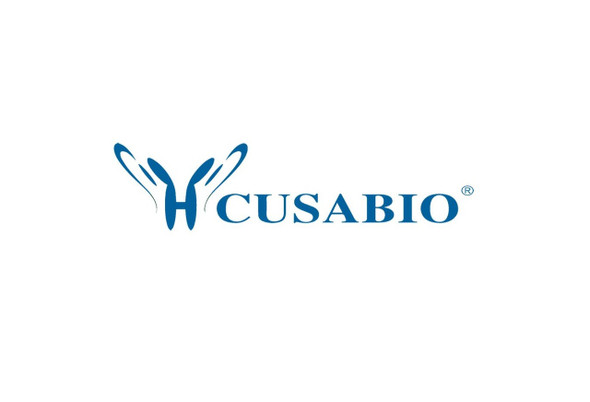Cusabio Mouse Recombinants
Recombinant Mouse Importin subunit beta-1 (Kpnb1) | CSB-EP012490MO
- SKU:
- CSB-EP012490MO
- Availability:
- 3 - 7 Working Days
Description
Recombinant Mouse Importin subunit beta-1 (Kpnb1) | CSB-EP012490MO | Cusabio
Alternative Name(s): Karyopherin subunit beta-1Nuclear factor p97Pore targeting complex 97KDA subunit ;PTAC97SCG
Gene Names: Kpnb1
Research Areas: Others
Organism: Mus musculus (Mouse)
AA Sequence: MELITILEKTVSPDRLELEAAQKFLERAAVENLPTFLVELSRVLANPGNSQVARVAAGLQIKNSLTSKDPDIKAQYQQRWLAIDANARREVKNYVLQTLGTETYRPSSASQCVAGIACAEIPVSQWPELIPQLVANVTNPNSTEHMKESTLEAIGYICQDIDPEQLQDKSNEILTAIIQGMRKEEPSNNVKLAATNALLNSLEFTKANFDKESERHFIMQVVCEATQCPDTRVRVAALQNLVKIMSLYYQYMETYMGPALFAITIEAMKSDIDEVALQGIEFWSNVCDEEMDLAIEASEAAEQGRPPEHTSKFYAKGALQYLVPILTQTLTKQDENDDDDDWNPCKAAGVCLMLLSTCCEDDIVPHVLPFIKEHIKNPDWRYRDAAVMAFGSILEGPEPNQLKPLVIQAMPTLIELMKDPSVVVRDTTAWTVGRICELLPEAAINDVYLAPLLQCLIEGLSAEPRVASNVCWAFSSLAEAAYEAADVADDQEEPATYCLSSSFELIVQKLLETTDRPDGHQNNLRSSAYESLMEIVKNSAKDCYPAVQKTTLVIMERLQQVLQMESHIQSTSDRIQFNDLQSLLCATLQNVLRKVQHQDALQISDVVMASLLRMFQSTAGSGGVQEDALMAVSTLVEVLGGEFLKYMEAFKPFLGIGLKNYAEYQVCLAAVGLVGDLCRALQSNILPFCDEVMQLLLENLGNENVHRSVKPQILSVFGDIALAIGGEFKKYLEVVLNTLQQASQAQVDKSDFDMVDYLNELRESCLEAYTGIVQGLKGDQENVHPDVMLVQPRVEFILSFIDHIAGDEDHTDGVVACAAGLIGDLCTAFGKDVLKLVEARPMIHELLTEGRRSKTNKAKTLATWATKELRKLKNQA
Source: E.coli
Tag Info: N-terminal 6xHis-tagged
Expression Region: 1-876aa
Sequence Info: Full Length
MW: 101.2 kDa
Purity: Greater than 90% as determined by SDS-PAGE.
Relevance: Functions in nuclear protein import, either in association with an adapter protein, like an importin-alpha subunit, which binds to nuclear localization signals (NLS) in cargo substrates, or by acting as autonomous nuclear transport receptor. Acting autonomously, serves itself as NLS receptor. Docking of the importin/substrate complex to the nuclear pore complex (NPC) is mediated by KPNB1 through binding to nucleoporin FxFG repeats and the complex is subsequently translocated through the pore by an energy requiring, Ran-dependent mechanism. At the nucleoplasmic side of the NPC, Ran binds to importin-beta and the three components separate and importin-alpha and -beta are re-exported from the nucleus to the cytoplasm where GTP hydrolysis releases Ran from importin. The directionality of nuclear import is thought to be conferred by an asymmetric distribution of the GTP- and GDP-bound forms of Ran between the cytoplasm and nucleus. Mediates autonomously the nuclear import of ribosomal proteins RPL23A, RPS7 and RPL5. Binds to a beta-like import receptor binding (BIB) domain of RPL23A. In association with IPO7 mediates the nuclear import of H1 histone. In vitro, mediates nuclear import of H2A, H2B, H3 and H4 histones. In case of HIV-1 infection, binds and mediates the nuclear import of HIV-1 Rev. Imports SNAI1 and PRKCI into the nucleus .
Reference: Novel importin-alpha family member Kpna7 is required for normal fertility and fecundity in the mouse.Hu J., Wang F., Yuan Y., Zhu X., Wang Y., Zhang Y., Kou Z., Wang S., Gao S.J. Biol. Chem. 285:33113-33122(2010)
Storage: The shelf life is related to many factors, storage state, buffer ingredients, storage temperature and the stability of the protein itself. Generally, the shelf life of liquid form is 6 months at -20?/-80?. The shelf life of lyophilized form is 12 months at -20?/-80?.
Notes: Repeated freezing and thawing is not recommended. Store working aliquots at 4? for up to one week.
Function: Functions in nuclear protein import, either in association with an adapter protein, like an importin-alpha subunit, which binds to nuclear localization signals (NLS) in cargo substrates, or by acting as autonomous nuclear transport receptor. Acting autonomously, serves itself as NLS receptor. Docking of the importin/substrate complex to the nuclear pore complex (NPC) is mediated by KPNB1 through binding to nucleoporin FxFG repeats and the complex is subsequently translocated through the pore by an energy requiring, Ran-dependent mechanism. At the nucleoplasmic side of the NPC, Ran binds to importin-beta and the three components separate and importin-alpha and -beta are re-exported from the nucleus to the cytoplasm where GTP hydrolysis releases Ran from importin. The directionality of nuclear import is thought to be conferred by an asymmetric distribution of the GTP- and GDP-bound forms of Ran between the cytoplasm and nucleus. Mediates autonomously the nuclear import of ribosomal proteins RPL23A, RPS7 and RPL5. Binds to a beta-like import receptor binding (BIB) domain of RPL23A. In association with IPO7 mediates the nuclear import of H1 histone. In vitro, mediates nuclear import of H2A, H2B, H3 and H4 histones. Imports SNAI1 and PRKCI into the nucleus (By similarity).
Involvement in disease:
Subcellular Location: Cytoplasm, Nucleus envelope
Protein Families: Importin beta family, Importin beta-1 subfamily
Tissue Specificity:
Paythway:
Form: Liquid or Lyophilized powder
Buffer: If the delivery form is liquid, the default storage buffer is Tris/PBS-based buffer, 5%-50% glycerol. If the delivery form is lyophilized powder, the buffer before lyophilization is Tris/PBS-based buffer, 6% Trehalose, pH 8.0.
Reconstitution: We recommend that this vial be briefly centrifuged prior to opening to bring the contents to the bottom. Please reconstitute protein in deionized sterile water to a concentration of 0.1-1.0 mg/mL.We recommend to add 5-50% of glycerol (final concentration) and aliquot for long-term storage at -20?/-80?. Our default final concentration of glycerol is 50%. Customers could use it as reference.
Uniprot ID: P70168
HGNC Database Link: N/A
UniGene Database Link: UniGene
KEGG Database Link: KEGG
STRING Database Link: STRING
OMIM Database Link: N/A









